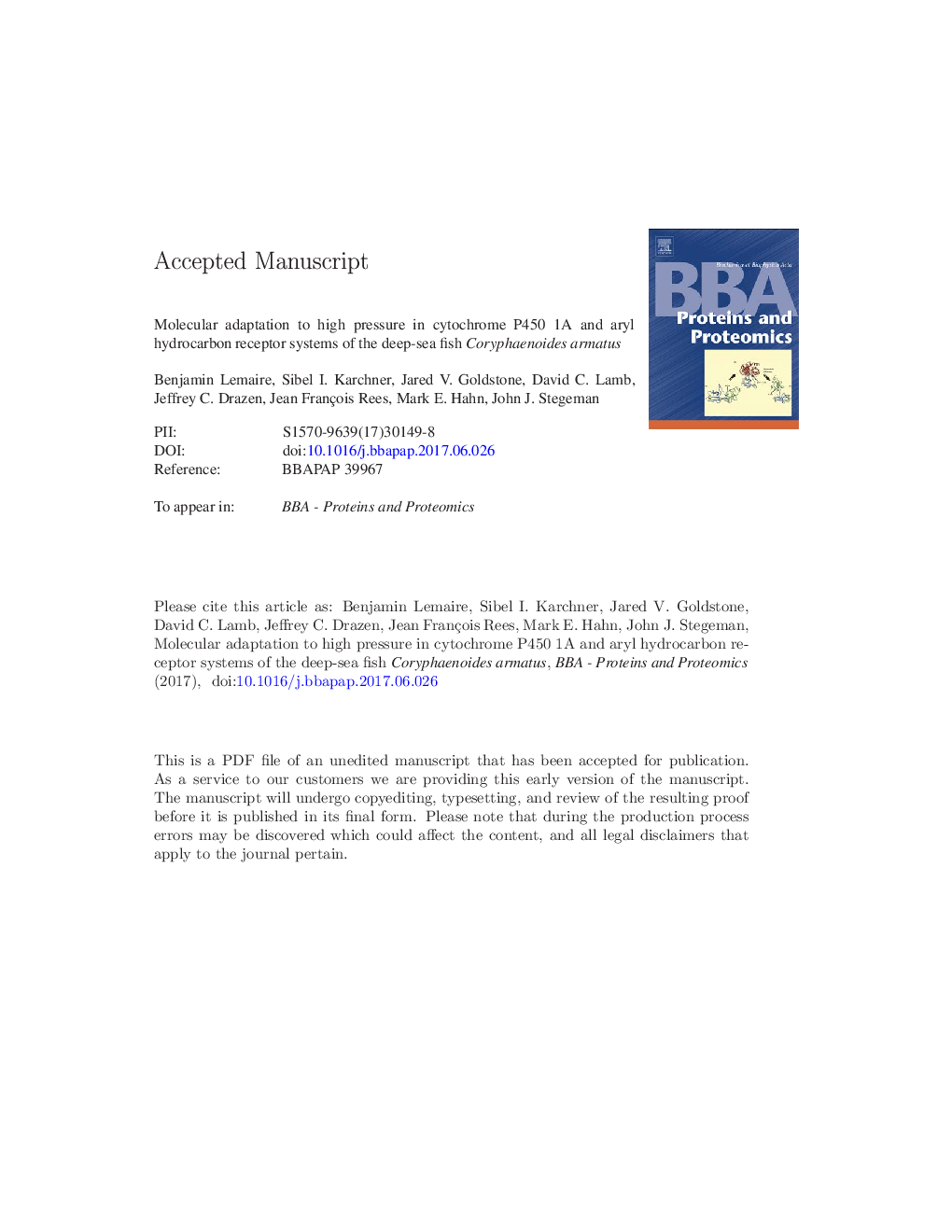| کد مقاله | کد نشریه | سال انتشار | مقاله انگلیسی | نسخه تمام متن |
|---|---|---|---|---|
| 7560589 | 1491443 | 2018 | 45 صفحه PDF | دانلود رایگان |
عنوان انگلیسی مقاله ISI
Molecular adaptation to high pressure in cytochrome P450 1A and aryl hydrocarbon receptor systems of the deep-sea fish Coryphaenoides armatus
دانلود مقاله + سفارش ترجمه
دانلود مقاله ISI انگلیسی
رایگان برای ایرانیان
موضوعات مرتبط
مهندسی و علوم پایه
شیمی
شیمی آنالیزی یا شیمی تجزیه
پیش نمایش صفحه اول مقاله

چکیده انگلیسی
Limited knowledge of the molecular evolution of deep-sea fish proteomes so far suggests that a few widespread residue substitutions in cytosolic proteins binding hydrophilic ligands contribute to resistance to the effects of high hydrostatic pressure (HP). Structure-function studies with additional protein systems, including membrane bound proteins, are essential to provide a more general picture of adaptation in these extremophiles. We explored molecular features of HP adaptation in proteins binding hydrophobic ligands, either in lipid bilayers (cytochrome P450 1A - CYP1A) or in the cytosol (the aryl hydrocarbon receptor - AHR), and their partners P450 oxidoreductase (POR) and AHR nuclear translocator (ARNT), respectively. Cloning studies identified the full-length coding sequence of AHR, CYP1A and POR, and a partial sequence of ARNT from Coryphaenoides armatus, an abyssal gadiform fish thriving down to 5000Â m depth. Inferred protein sequences were aligned with many non-deep-sea homologs to identify unique amino acid substitutions of possible relevance in HP adaptation. Positionally unique substitutions of various physicochemical properties were found in all four proteins, usually at sites of strong-to-absolute residue conservation. Some were in domains deemed important for protein-protein interaction or ligand binding. In addition, some involved removal or addition of beta-branched residues; local modifications of beta-branched residue patterns could be important to HP adaptation. In silico predictions further suggested that some unique substitutions might substantially modulate the flexibility of the polypeptide segment in which they are found. Repetitive motifs unique to the abyssal fish AHR were predicted to be rich in glycosylation sites, suggesting that post-translational changes could be involved in adaptation as well. Recombinant CYP1A and AHR showed functional properties (spectral characteristics, catalytic activity and ligand binding) that demonstrate proper folding at 1Â atm, indicating that they could be used as deep-sea fish protein models to further evaluate protein function under pressure. This article is part of a Special Issue entitled: Cytochrome P450 biodiversity and biotechnology, edited by Erika Plettner, Gianfranco Gilardi, Luet Wong, Vlada Urlacher, Jared Goldstone".
ناشر
Database: Elsevier - ScienceDirect (ساینس دایرکت)
Journal: Biochimica et Biophysica Acta (BBA) - Proteins and Proteomics - Volume 1866, Issue 1, January 2018, Pages 155-165
Journal: Biochimica et Biophysica Acta (BBA) - Proteins and Proteomics - Volume 1866, Issue 1, January 2018, Pages 155-165
نویسندگان
Benjamin Lemaire, Sibel I. Karchner, Jared V. Goldstone, David C. Lamb, Jeffrey C. Drazen, Jean François Rees, Mark E. Hahn, John J. Stegeman,